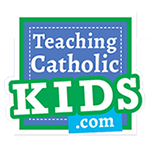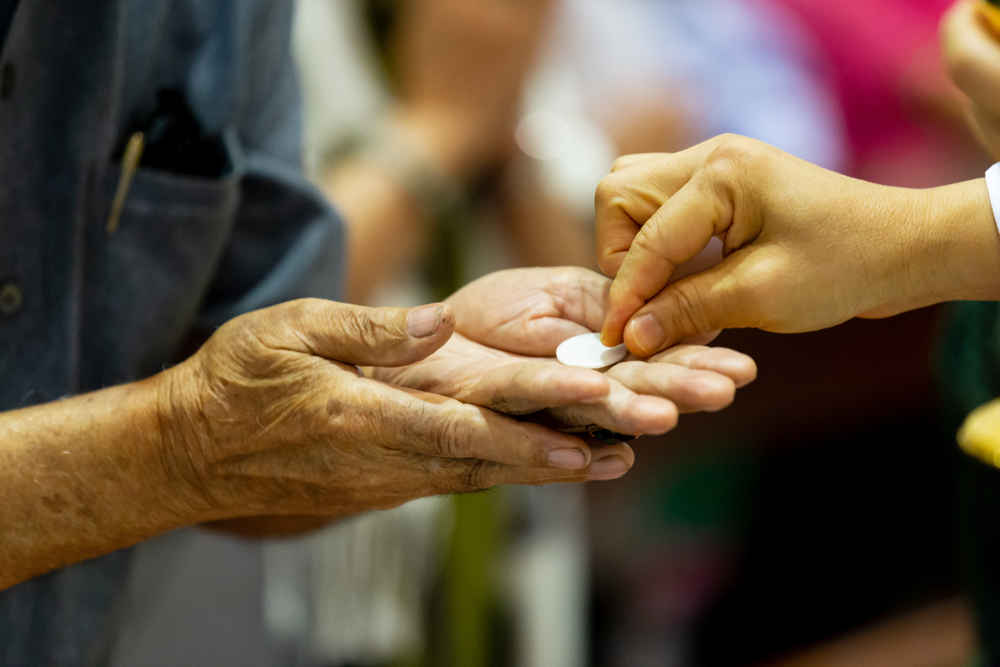Today’s first reading speaks of Melchizedek—the priest that all other priests are modeled after. When a man is ordained in the Catholic Church, he becomes a “priest in the line of Melchizedek forever.” This priest offered to the True God bread and wine—he was the foreshadowing of the priesthood that was to come. When Abram received his blessing, he gave 10% of what he had to God. Abram’s response was to share what he had.
Similar to the Holy Thursday readings, it is the second that recounts the story of the Last Supper—when Jesus instituted the Eucharist. Jesus told us that the bread and wine had become his body and blood and that we should do it “in remembrance” of him. When we do it, we “proclaim the death of the Lord until he comes.” This means that it is the sacrifice that Jesus made of himself that we celebrate. His dying and rising made a “new covenant”—so that the one made with Abram is complete. Jesus is the new priest, taking the place of Melchizedek, moving from an offering of plain bread and wine that Melchizedek made, to an offering of the True Presence of Jesus that our priests make.
The Gospel is the miracle of the loaves and fishes. The Apostles are worried that the crowds aren’t leaving and that they will get hungry. Jesus tells the Apostles to feed them. They don’t know how—so Jesus does it himself. When it’s all over, there are twelve baskets of food left over which is a foreshadowing of the fact that the Apostles will, someday be the one feeding them for Jesus, with Jesus. But, that’s the point—Jesus gives us food, and wants us to feed others with it (he is the food).
You can read this Sunday’s readings here:
Scriptures for Corpus Christi Sunday, Cycle C
Break open the word with your family
Kids
What is your favorite family celebration? What do you love about it? Does any of it remind you of Mass?
Teens
Judging by the readings mention of tithing (giving ten percent of your income), the sacrifice that Jesus made and the feeding of the crowd, what is the intended outcome of Eucharist? What is it meant to lead us to?
Adults
We have a few words that we use for the Body and Blood of Jesus: Eucharist and Holy Communion. Eucharist means “thanksgiving” and Communion relates to things like union, community, etc. What do these titles tell you about what we are participating in?
A little lectio
The ancient practice of prayerfully reflecting on bits of Scripture is known as lectio divina. Want to try it out with your family? Head over to Lectio Divina for Kids to find out how to adapt this prayer practice for your kids.
A little Bible study
Want to do a little Bible study with your kids? Here are some tips:
- During Ordinary Time, the Church pairs the Old Testament and New Testament readings in a way that each sheds light on the other. Ask your kids to look for the common theme connecting the two readings. (Sometimes it’s obvious, sometimes it is subtle.) How does the “dialogue” between the readings help you understand them better?
- Get a New American Bible, Revised Edition, and take a look at the footnotes for these readings. How do they change your understanding of what is going on?
- Take a look at the context for the readings—what happens before, or after?
- Read the NABRE’s introduction to the book of the Bible that the readings are taken from. How does that help you understand the readings?
- If you don’t have a copy of the NABRE at home, you can view it online at the USCCB website at the Daily Readings web page. (The link will take you to today’s reading; click forward or backward on the dates to get to Sunday’s readings.)
For even more resources for breaking open this Sunday’s readings, head over to The Sunday Website



